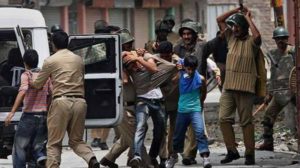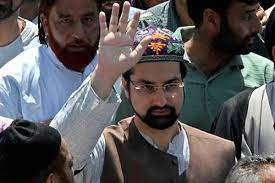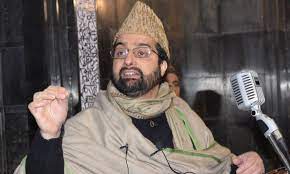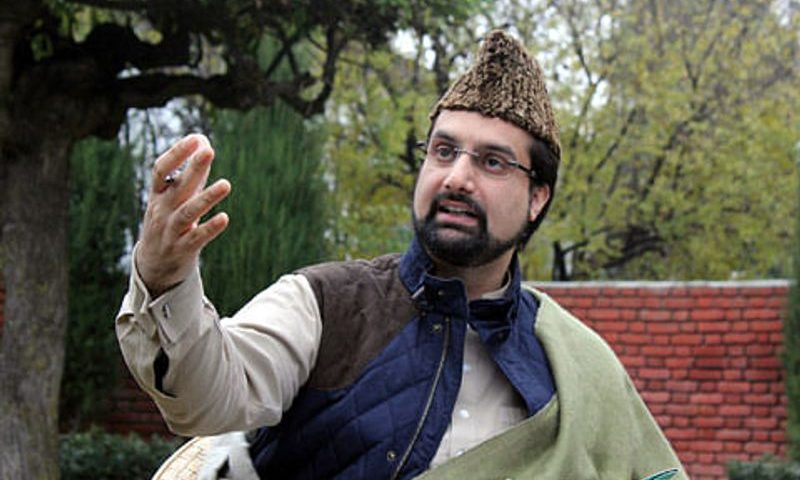 An “all-time increase” in militancy-related incidents, alleged ceasefire violations, deaths of forces personnel and nearly 100 civilian killings by forces during the five-month-long uprising, is what 2016 would be remembered for. The year, however, threw up a major challenge for various security agencies operating J&K, according to officials.
An “all-time increase” in militancy-related incidents, alleged ceasefire violations, deaths of forces personnel and nearly 100 civilian killings by forces during the five-month-long uprising, is what 2016 would be remembered for. The year, however, threw up a major challenge for various security agencies operating J&K, according to officials.
Official figures with Kashmir Post suggest that since January 1 this year, 305 militancy-related incidents were registered. According to these, there were 170 militancy-related incidents in 2013 which increased to 222 in 2014. The figures saw a slight dip in 2015 but showed an “all-time increase” in 2016 when there were 305 such incidents up to November 27, official sources said.
Similarly, the figures reveal that in 2013, 15 civilians were killed while 31 injured in various militancy-related incidents. “In 2014, 28 civilians were killed and 71 injured in such incidents. The civilian killings then in militancy-related incidents decreased in 2015 when 17 were killed and 70 injured. The figures further went down as 14 civilians were killed and 61 injured in 2016 in militancy-related incidents in J&K,” the official sources said.
What, however, pushed the figures of civilian killings by forces up this year was the killing of Hizbul Mujahideen commander Burhan Wani on July 8 in an encounter in Kokernag area of South Kashmir’s Anantnag district. Police sources said on July 8 alone, at least 12 people were killed.
At least 97 civilians were killed in the five-month long uprising triggered by Burhan’s killing. “We would never want to see a civilian getting killed, but situation worsened to the extreme,” a senior police officer here said.
‘High Tension On LOC’
Figures suggest that in 2015, 152 ceasefire violations were witnessed on the Line of Control. “In 2015, six soldiers were killed in exchange of fire on LoC while 17 were injured. In 2016, eight soldiers were killed in exchange of fire while the injury figure went to all time high of 59,” the official figures reveal.
These figures also reveal that militants inflicted huge casualties on the forces this year. “53 forces personnel were killed in 2013, 47 in 2014, 39 in 2015. But 71 personnel were killed in 2016 and 208 were also injured this year while fighting militants,” an official said.
Figures reveal that 140 militants were killed upto November 27 this year. Officials said 116 infiltration bids were witnessed in 2016.
An Army official, wishing not to be named, said 2016 threw up “series of challenges” for them. “On one hand, there were law and order problems and situation too remained tense on the LoC. In between, militants also stepped up attacks on forces. We faced multiple challenges and dealt with all bravely,” he said. “The sad part was only the civilian casualties that took place from July to October.”
Director General of Police Dr SP Vaid said there has been enough of bloodshed in Kashmir and “it’s time to see peace and reap its benefits.”
“My endeavour will be to ensure people and police work shoulder to shoulder for the betterment of society,” Vaid told Kashmir Post, after being cleared as the DGP of J&K by the State Cabinet.
Ex-GOC Speaks
Former General officer Commanding (GoC) of Srinagar-based 15 Corps Lt General (Rtd) Syed Ata Hasnain said ever since 1989, J&K has “undergone phases of asymmetric hybrid war.” “Before 2016 the previous cycle commenced in 2010 just after 2008—street turbulence and relative peace for six years characterised by dwindling strength of militants and low levels of infiltration. The period did see the rise of new militancy in South Kashmir,” Hasnain said. “It was a movement led and handled by the local youth linked with Hizbul Mujahideen. The period also saw rising alienation levels along with a higher degree of radicalisation but less control by the United Jihad Council from across the LoC.”
He said the leadership provided by Burhan Wani appeared “a romanticised experiment with the gun” and saw “new trends such as the use of social media to attract support, generate flash mobs and even concentrate these at encounter sites to prevent smooth conduct of operations by the security forces.”
He said what 2016 witnessed was a “trigger related chain of events— the trigger being the death of Burhan Wani at the hands of the Rashtriya Rifles.”
“It was pent up emotion of alienation which came pouring out and it was fully exploited by the sponsors of the asymmetric war. There were three essential differences with what we witnessed in 2008-10. First, it was rural Kashmir which seemed to rule the roost unlike 2008-10 when the Army kept a tight control over this segment. Second, the JK Police was targeted with vengeance to break its cohesion, with some success. Third, the leadership appeared invisible and indeterminate with the Hurriyat getting largely marginalised but boldly attempting to cling on,” Hasnain said. “The Government of India’s efforts at stopping violence remained sincere but youth vigilantism prevented the same. The Home Minister, Rajnath Singh paid frequent visits to find a middle ground. The villain of the peace, however, remained the pellet gun which the vigilantes (sic) used as a symbol to project Indian human rights violations”.






